As a kid growing up by the sea in Northern Ireland, I used to eat fish and chips a lot. They came wrapped in heavy taupe paper, liberally dusted with Saxa table salt, and pungent with the sting of Sarson’s malt vinegar. Sometimes you’d get a useless plastic fork, a couple of slippery sachets of tartar sauce or ketchup, and you’d take yourself off to sit at the harbour, wolfing down soft golden chips and hunks of battered fish, while keeping an eye on the seagulls and inhaling the salty reek of drying kelp.
Over the years, I’ve attempted fish and chips many times in London. It’s rarely been good, there’s no harbour view, and the nostalgia factor hasn’t been quite enough to get it over the line of satisfaction.
Every few years I try again. On the spur of the moment, I dipped into Fish Plaice in Bloomsbury recently for old times sake, but although it was better than most, it didn’t quite hit the mark. They’d done something with the batter that wasn’t right (semolina, I think) and it was, frankly, disconcerting to be eating in the gastronomic equivalent of one of those souvenir shops lit like alien spaceships, surrounded by tourists in their well-cushioned trainers, fresh from the Elgin Marbles.
So when I was invited by my friend Nicola at Lay & Wheeler to a wine lovers’ get-together over fish and chips, I was really hoping to redeem my most recent experience of this most touristic of dishes. The venue was The Golden Hind in Marylebone, something of an institution in a city where it’s considerably easier to find good sushi than good battered cod.
It’s not the cheapest, as you’d expect given the bouji location. At £18.50 for haddock and chips it’s considerably more expensive than the same thing in most pubs, but it is a sit-down restaurant unlike most chippies, and the service was spot on.
The fish and chips themselves were very good, no complaints there. Fresh and mushy peas were provided, the latter to the enduring horror of everyone foreign to these islands. There was also tartar sauce, which, even by the standards of commercial tartar sauce, was shockingly poor. Think tasteless industrial mayonnaise and banish any thought of capers, pickles or dill from your mind.
It was nice to see, prominently displayed, that The Golden Hind has been run by three Italian owners from 1914 to 1994, and two Greeks since then, including the current owner, Jason Christou, who took over in 2002. For a dish whose fried fish element came via Spanish and Portuguese Jews, and whose chip element is probably French or Belgian, I think that’s gratifyingly cosmopolitan.
There’s been a trend for some time in the UK to match fish and chips with Champagne, and the evening was duly Champagne-themed, with everyone invited to bring a bottle, and there were some starry names. The standouts for me were fairly equally divided between the famous grand marques, with Bollinger Grande Annee 2002 (my personal favourite) and Dom Perignon 2012 both sensational, and among the smaller growers, the powerful Jacquesson 1996, Vilmart’s Grand Cellier d’Or 2017 and Olivier Horiots ‘5 Sens’ 2014 were the highlights.
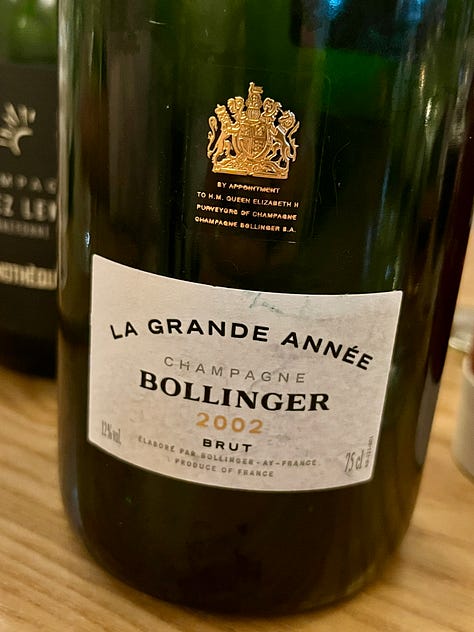
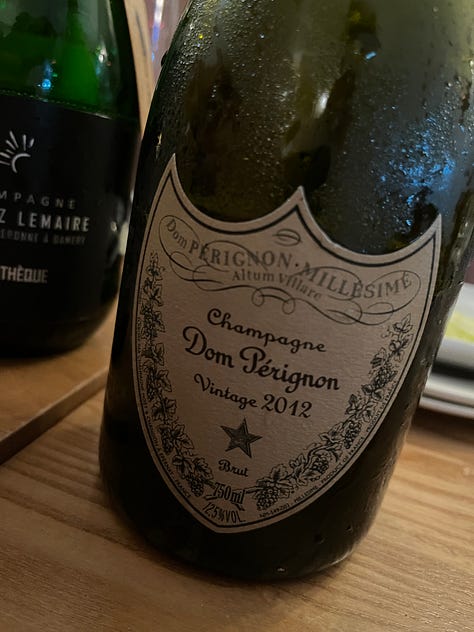

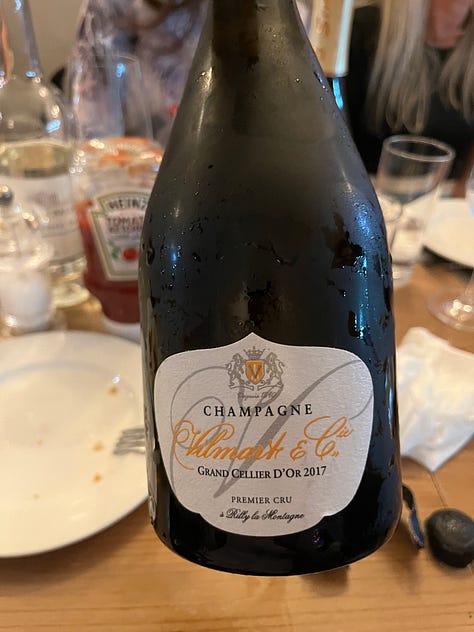
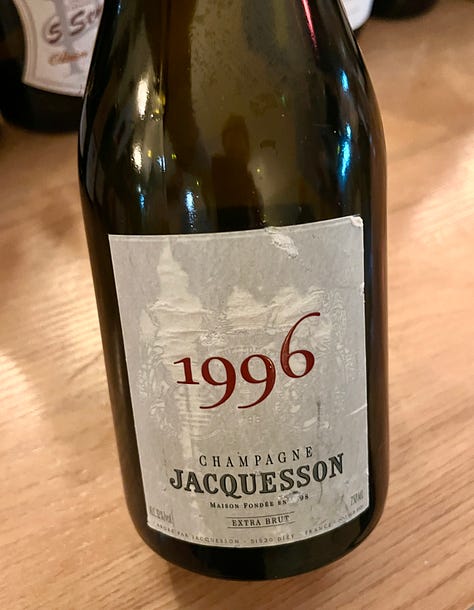
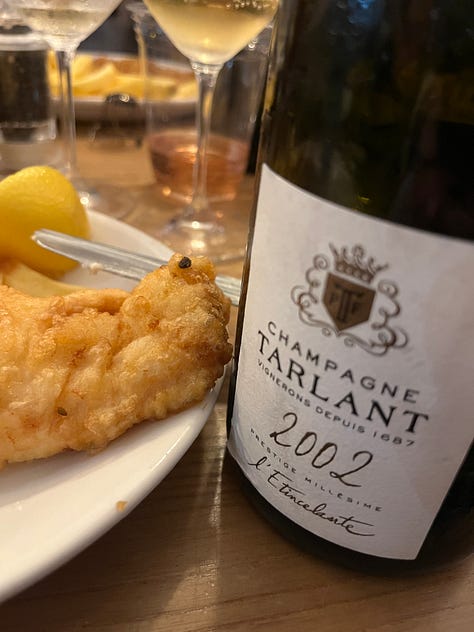
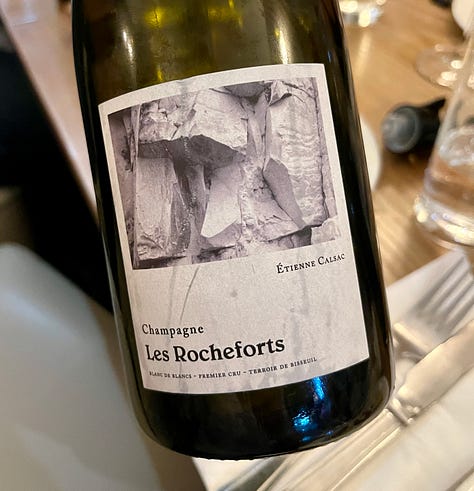
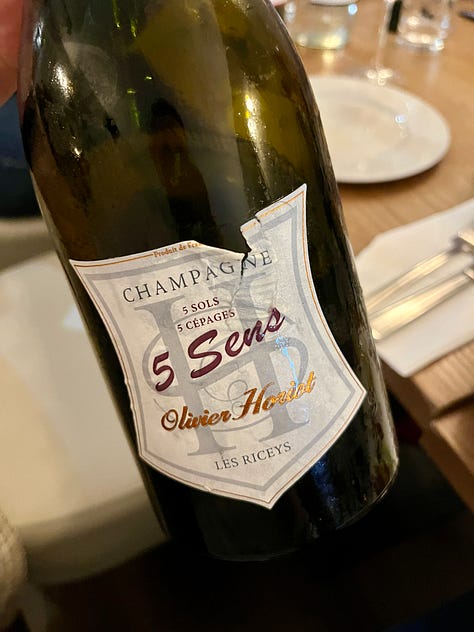

If I’m honest, I like this sort of dinner just as much as one in a smart restaurant where everything is matched with great thought and care. Those can be wonderful, and Champagne is very good at complementing high-end gastronomy, but there is something liberating about drinking top Champagne with everyday dishes.
Given the deeply engrained associations between Champagne and celebration, there’s a special thrill to drinking Champagne without a reason to celebrate, simply because you feel like it. There’s also something pleasingly perverse about drinking expensive wines with regular food, like the hedonistic American pairing of top Napa cabernet and a dirty burger.
When it comes to the idea of matching Champagne with fish and chips, the conventional wisdom is that the acidity and bubbles in the Champagne help to cut through the stodginess of the food. Does it work as a food and wine match? Yes, very well, but it’s a mistake to think that this is where the pleasure actually lies.
So much effort has been committed to the idea of pairing food and wine in the last 50 years that it has created a kind of aspirational anxiety among many wine drinkers. Too many wines are kept for too long as a result, their drinking deferred for the ‘perfect’ occasion, when it’s better to work on a more instinctive level. I can’t help but observe among my wine-loving friends and professional colleagues that, the more you know about wine, the less you agonise about food and wine match-ups.
As with all luxury, Champagne requires the foil of ordinariness to really deliver its magic.
With Champagne and fish and chips, the pleasure lies in the contrast between high and low, noble and base, cheap and expensive. Drinking it surrounded by plutocratic wealth is sterile and unimaginative. The absolute best time to drink Champagne, therefore, is when you’re broke. In my twenties, I liked nothing better than being given a glass of Champagne at a party when, just previously, I’d handed over the last of my cash for a stomach-lining Cornish pasty and twenty Marlboro Reds.
Drinking it when you’re happy is acceptable, but trite and ever-so-slightly basic. It’s much better to drink it when you’re sad. Just had a breakup? Champagne. Didn’t get an interview for the job you wanted? Champagne. Burnt your Sunday roast? Champagne, and a pizza delivery.
You’d be forgiven and absolutely right for thinking that this is all a bit Petit Trianon — Marie Antoinette milking her cows before returning to the gilded apartments of Versailles. But the Queen was onto something: that is why it’s fun in the first place.
Endless bling is dull and stale. Of course Champagne is good with oysters, and expensive fish, and fine poultry. But, as with all luxury, Champagne requires the foil of ordinariness to really deliver its magic.







I’m celebrating my birthday in a few weeks and sparkling wine and humble seafood will be on the menu for sure! I’m substituting fish and chips for lobster roll however, a treat we’re missing in London for sure!
The Friar's Delight, Theobald's Road. They used to use beef dripping -maybe they still do - and the cabbies used to park up, which is always a good sign.